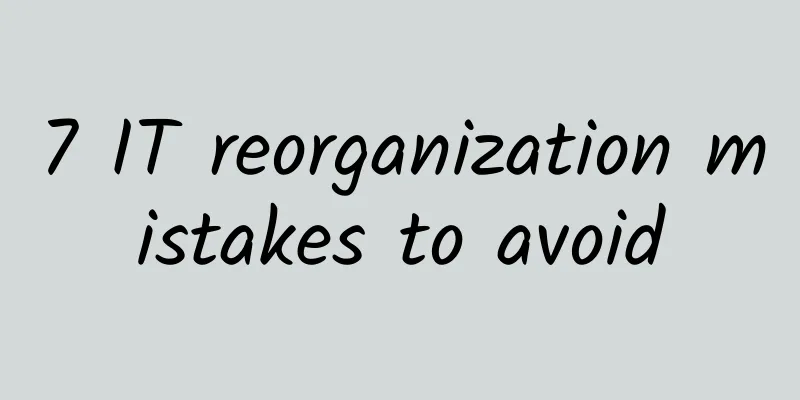5 Service Level Agreement Best Practices for a Unified Communications Strategy

|
Organizations need strong SLAs to meet their UCaaS performance needs. So how do you get the most out of your UCaaS provider's SLA? Five SLA best practices provide guidance.
Service level agreements (SLAs) are a key part of UCaaS contracts. They should clearly spell out service conditions, such as uptime, mean time to repair, and other performance characteristics, and provide buyers with remedies for poor performance. Unfortunately, creating a reliable and enforceable SLA is often a difficult task. Most UCaaS providers offer boilerplate terms of service that include usage, options to terminate service, payment requirements, privacy and security, and dispute resolution. Providers may or may not honor credit guarantees for uptime and performance. Regulatory requirements that apply to public switched telephone network (PSTN) providers do not apply to UCaaS providers. Customers may lack the ability to negotiate an SLA that meets their needs. Some enterprises may adopt a boilerplate SLA from a UCaaS provider, especially if they experience difficulty and complexity in negotiating an SLA for WAN technology. The complexity of WAN technology SLAs, as well as the difficulty of monitoring service outages and obtaining credits, makes developing and enforcing SLAs time-consuming, tedious, and often not worth the effort. So how can organizations get the service-level guarantees that meet their UCaaS needs and employ remedies for non-performance? Follow these five SLA best practices to achieve UCaaS success. 1. Read the fine print Typically, SLAs are publicly available on the UCaaS provider's website. Carefully review these SLAs to ensure that the service provider provides a method to terminate the service for non-performance and defines what non-performance means. Your legal team should review the SLA and request modifications if necessary to ensure that you are not taking on undue risk. 2. Comparison of Cloud Computing Service Level Agreements (SLAs) for Unified Communications as a Service (UCaaS) Back in 2015, 8x8 Inc. launched the first voice-over-IP service-level agreement (SLA), which promised four nines of availability (99.99%) and a minimum mean opinion score (MOS) of 3 on a scale of 1 to 5. Some providers have similar guarantees, but most offer only a best-effort service guarantee. 3. Management of Unified Communications as a Service (UCaaS) When implementing UCaaS, organizations still need to manage the UCaaS program. At a minimum, reports from the provider, such as uptime, voice and video performance, and planned outage information, should be monitored. Service provider reports may also include detailed information about the performance of the underlying data network that connects the organization to the provider. According to Nemertes Research, nearly 60% of organizations manage UCaaS through existing network management tools or professional tools from vendors such as Integrated Research, Nectar, Oracle, and Unify Square. One-third of organizations rely entirely on vendor insights. Websites such as Downdetector are also useful tools for insight into service availability. 4. Address performance and support Most discussions about UCaaS SLAs focus on performance factors, such as uptime, MOS, and jitter. But equally important factors are support and service provision. Make sure your SLA governs the time it takes to provide service; implement moves, adds, and changes; and update routing databases. Also, make sure the provider provides guarantees for mean time to repair, mean response time, and help desk availability. There should be no penalty for failing to report an outage because support services are unavailable. 5. Set the right expectations Often, Unified Communications as a Service (UCaaS) tools are not designed to match the availability of regulated PSTN services. Not all providers offer five or six nines availability. The underlying connection across public internet services can be unreliable, but performance can often be improved by using software-defined WAN to virtualize traffic across multiple WAN service options. Make sure you have a backup plan for occasional downtime. To successfully establish a UCaaS SLA requires some work, from assessing your needs and what the provider offers, to post-deployment insight into actual performance. Address SLA best practices early in your organization's UCaaS evaluation and plan to monitor performance to determine if the provider is meeting your needs. |
Recommend
Come to Huawei Cloud 828 Enterprise Cloud Festival and experience the super value offers beyond your imagination!
[51CTO.com original article] Enterprises want to ...
Can 5G save operators from negative growth at the beginning of the year?
Although work has not yet been fully resumed, the...
The three major operators' performance in the first half of 2021 collectively "rejuvenated": 5G drives value return and emerging business revenue growth is outstanding
[[418602]] The traditional communication business...
Megalayer: Singapore native IP annual payment starts from 249 yuan, Singapore/Hong Kong/Philippines/US VPS annual payment starts from 199 yuan
Megalayer recently launched a VPS host in Singapo...
Operators sound the charge for 5G terminals: With the "double clamp", the proportion of 5G mobile phones has increased significantly
2020 is the starting point for the substantial de...
The black industry chain operators behind free traffic lose hundreds of millions every year
[[178087]] Behind the “free traffic” is actually ...
Security monitoring and observability capability building based on system operation experience
Observability refers to the ability to measure th...
The turning point has arrived: NB-IoT industry is accelerating its release!
The birth of any new technology is always met wit...
5G+Cloud+AI: Huawei and operators work together to build new ICT infrastructure, unleash the benefits of 5G, and enable a wide range of industries
[Shenzhen, China, July 30, 2020] Today, at the Cl...
Byte One: Is there any difference between HTTP long connection and TCP long connection?
Hello everyone, I am Xiaolin. A reader sent me a ...
Tomorrow’s 5G performance depends on today’s mobile edge
We have been hearing the hype about 5G for quite ...
5G core network architecture and some basic concepts
The 5G wireless access network architecture mainl...
The 5G vision has not yet been fully realized, but 6G is coming?
◎ Science and Technology Daily reporter Liu Yan O...
HostDare offers a 20% discount on the CN2 GIA route in Los Angeles starting at $28.7/year
HostDare has updated new discount codes, offering...
Under the new IT operation and maintenance model, full-stack traceability helps you solve application performance monitoring problems
[51CTO.com original article] In 2016, Gartner cha...









